Specifications
| General information | |
| Type | CPU / Microprocessor |
| Family | AMD Athlon II X3 |
| Model number | 415e |
| CPU part number | AD415EHDK32GM |
| Box part number | AD415EHDGMBOX |
| Frequency (MHz) | 2500 |
| Bus speed (MHz) < |
|
| Package | 938-pin organic micro-PGA |
| Sockets | Socket AM2+ Socket AM3 |
| Introduction date | May 10, 2010 |
| Price at introduction | $102 |
| Architecture / Microarchitecture | |
| Processor core | Rana |
| Core stepping | C3 |
| Manufacturing process | 0.045 micron |
| Die size | 169 mm2 |
| Data width | 64 bit |
| Number of cores | 3 |
| Floating Point Unit | Integrated |
| Level 1 cache size | 3 x 64 KB instruction caches3 x 64 KB data caches |
| Level 2 cache size | 3 x 512 KB caches |
| Electrical/Thermal parameters | |
| V core (V) | 0.775 – 1.25 |
| Maximum operating temperature (°C) | 72 |
| Thermal Design Power (W) | 45 |
Closer Look
A close look at the specs shows us that the 415e has a 12.5 multiplier with a 200MHz bus, which shouldn’t be to bad for overclocking, as well as 1.5MB of L2 cache. This puts the 415e just underneath AMDs regular powered Athlon II x3 435 2.9GHz, which isn’t a bad place to be. The specs are almost identical save for the speed and power consumption; the 435 also has a higher multiplier. This seems like it would be great for a small lower powered machine. Great for home theater, servers, etc; basically anything that usually stays on for extended amounts of time.
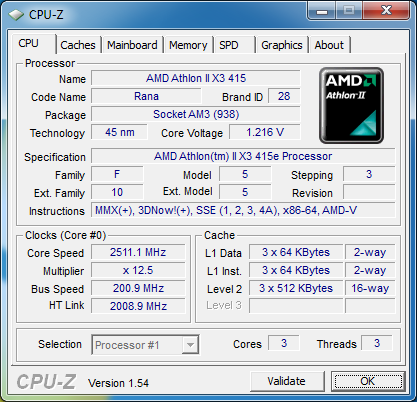
As I mentioned before, the 415e shares similar specs to the 435, which isn’t surprising considering they are based around the same architecture, Rana. Rana is the base of AMD’s newest line of Athlon II triple core processors. Rana is derived from Propus, which is the code name for AMD’s quad core Athlon series. Rana is simply a Propus die with one disabled core (often a defective core). Propus in itself is a derivation of the new Phenom II series; the difference being Propus’ lack of L3 cache giving the Phenom II a considerable edge.
Testing
Test Rig
| Motherboard | Gigabyte 890gpa-ud3h |
| Heatsink | Thermaltake TR2-R1 |
| Power Supply | FSP Group Everest 700 |
| RAM | Geil 4GB DDR3 (2x2GB) |
| Hard drive | 160GB Seagate Barracuda |
| GPU | Integrated Radeon 4290 |
Keep in mind that the results are for your testing benefit. Check your rig against these results to see how much of an upgrade you might get.
SiSoft Sandra
“SiSoftware Sandra (the System ANalyser, Diagnostic and Reporting Assistant) is an information & diagnostic utility. It should provide most of the information (including undocumented) you need to know about your hardware, software and other devices whether hardware or software. It works along the lines of other Windows utilities, however it tries to go beyond them and show you more of what’s really going on. Giving the user the ability to draw comparisons at both a high and low-level. You can get information about the CPU, chipset, video adapter, ports, printers , sound card, memory, network, Windows internals, AGP, PCI, PCI-X, PCIe (PCI Express), database, USB, USB2, 1394/Firewire, etc.”
The latest edition of SiSoft Sandra follows the tradition of testing the pure synthetic power of processors. We ran our test comparisons as shown against equivalent processors made by both Intel and AMD. Lets see how the AMD Athlon II x3 415 fairs against others.
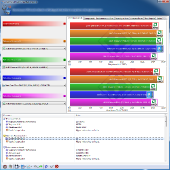 |
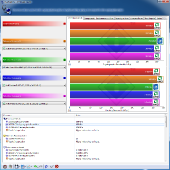 |
| Arithmetic | Cryptography |
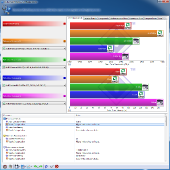 |
 |
| Multi-Core Efficiency | Power Management |
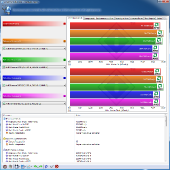 |
|
| Processor Multi Media | |
As you can see, the 415e does pretty well against it’s competition, but doesn’t show any cause for celebration. What is nice, though, is that the 415e does this well while using less power. Efficiency is not something to scoff at.

hi buddy… i just wanted to say that my msie is freezing when I click on the pics… are you using some js or something?
yeah there is some JavaScript. Works fine on my Mac 😛
But seriously try using a different browser. IE6 isn’t actually supported by many sites anymore.
This is just blatant PR for AMD. Complete waste of time as a review.
Max Power (I can only assume that is a reference to the Simpsons from the episode where Homer changes his name and becomes popular),
Unfortunately, we do not have any preference for any company and the simple fact is that AMD made a worthwhile product. We are not a PR Agency and do not act as such, although if you’re looking for a good PR agency to represent you, I would suggest The Max Borges PR Agency. If Intel would like to have a comparison done against this processor, they are more than welcome to send what they feel is their equivalent product. Our job here is simple. We build a rig, using random parts. We do NOT, under any circumstances, use specialized installs, manufacturer suggested parts, or any thing that would manipulate results in any way. If you see different results on other sites, it is likely that they have different computer builds. If a computer build has only one slight difference, it could skew the results drastically in either direction. This is why it is important that you take information from multiple sources, and can only use the average of what you find to make an assumption of product performance, before purchasing a computer.
I say it is worthless as a review because:
1) Some of the benchmarks you run are not compared to any other processors, so what is the point? These results can’t be compared to results from other sites because as you say your builds are from random parts
2) The benchmarks you do provide comparisons chips to, the processors are just so far out of the Athlon II’s league (eg core i7 860) it again is just a waste of time because the performance difference is huge.
I do apologize for the tone of my previous arguments, I just question the point of this article.
“Keep in mind that the results are for your testing benefit. Check your rig against these results to see how much of an upgrade you might get.”
You’re suppose to compare these results to your own rig.
Also, there was no way for me to change the i7 stuff for cinebench 11.5. I thought it fairly obvious considering my comparisons in SiSoft Sandra.
Here in Okinawa, power consumption is a BIG deal. We offer get electric bills of $600 in the summer months. So a CPU that does more with less power works for me. Not to mention my air-conditioner works less.
a 50% power loss drop is impressive